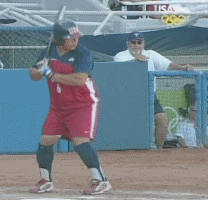T
theaddition
Guest
And so do you think the additional hip counter rotation is adding anything to her swing?
It [hip counter rotation] at the frames in question, do not add any appreciable additional forces. They store the potential energy generated from the earlier coil. IMO. The hands, as you have pointed out previously, for the most part, control the swing.
In this case, the hands are controlling the potential energy by controlling the coil [expanding and holding the Xfactor stretch].
Or better yet, the are controlling the uncoil.






